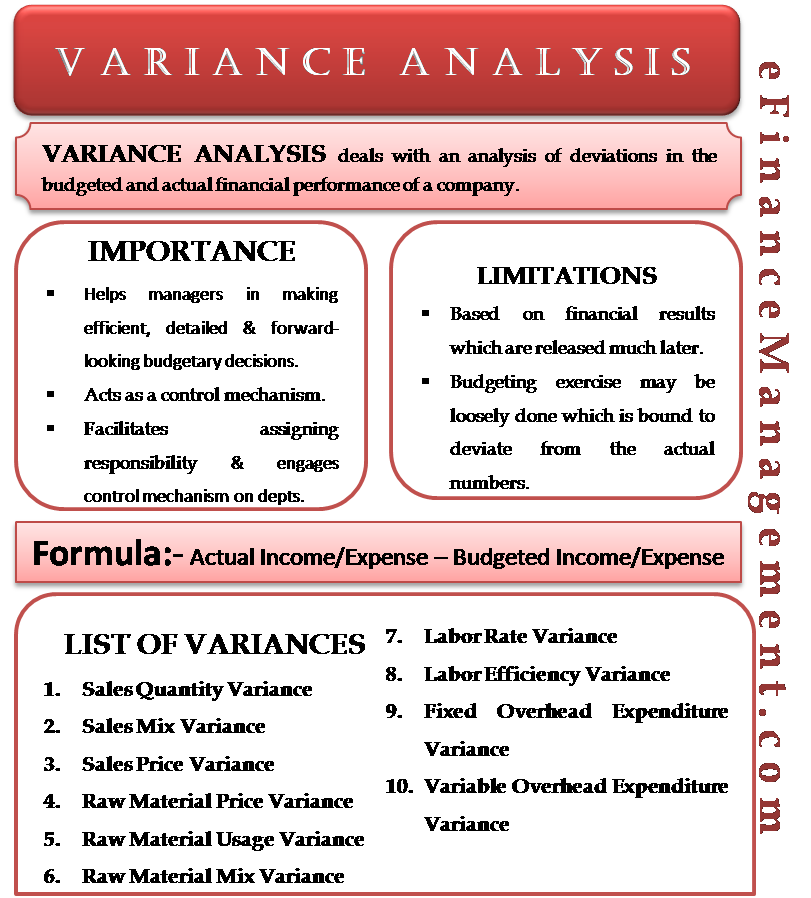
A TCPI is an index that shows how resources must be used for the rest of a project to come in under or on budget. Setting realistic project goals and estimates can be achieved by taking historical data into account. It’s common negative cost variance for project managers to look at previous similar projects and create a roadmap that reflects past experiences. It’s up to project managers to make a reliable estimate of potential manufacturing, shipping, or marketing costs.
For sales success, look to project management
Cost Variance (CV) is an indicator of the difference between earned value and actual costs in a project. It is a measure of the variance analysis technique which is a part of the earned value management methodology (EVM; source). Some argue that is an element of the earned value analysis (EVA) as well. However, this is not exactly accurate – EVA is rather the technique where the input data (i.e. the cost and value indicators) for the calculation of cost and schedule variances are determined.
ways to calculate cost variance
Thecumulative CV is a measure for the cumulative difference of the cumulative earnedvalue and actual cost figures of several, usually consecutive, periods. Sales project management benefits range from organizing resources to better collaboration. The Cost Performance Index (CPI) is similar to CV but is relative to the task budget. It gives you an idea how far over or under budget the task is relative to the overall task budget. As you can imagine, a -$500 cost variance is insignificant to a billion dollar oil platform project but quite significant to a $4,000 fence building project. Cost Variance, usually abbreviated as CV, is one of the fundamental outputs of the Earned Value Management System.
Example 1: A Simple Calculation of Cumulative and Point in Time Cost Variances
- The key is spotting them and making adjustments to stay on the right path.
- Whether variances are favorable or unfavorable, the causes should be found.
- A cost variance percentage is the percentage over or under budget for a project is.
- This standard cost in manufacturing is the expected cost of producing the product, but the budget covers all the units.
- Market conditions can also change, such as new competitors entering the market with new products and services.
It tells the project manager how far ahead or behind the projects is at the point of analysis, usually right now. In project management, getting an early indication of problems is the silver bullet that allows the project manager to correct the problems before they start. Cost variance is used to determine project health and helps you in avoiding cost overruns when you have multiple large scale projects to manage. If you have Budgeted cost or Earned value along with the actual cost, you can project the cost of the project after its completion. If you are wondering where our planned value came from in this case, it’s simply the planned % of work completed x budget at completion.

Instead, it merely means that the net income was lower than the forecasted projections for the period. While this was a straight forward cost variance analysis, some of them aren’t so easy. We are looking to calculate our cost variance at the 1 year mark, and at this stage, we are 40% of the way through the project and have spent $3,000,000 to date. To date, thousands of professionals have passed the PMP exam using my resources. Clients are cautious about spending because any deviation from the cost baseline can affect their profit.
Cost Performance Index
However, regardless of your age, scientists have found that your brain has an amazing ability to continually change and adapt, forming new pathways. This ability is referred to as neuroplasticity, which is your brain’s ability to form new synaptic connections, allowing reorganization or new functionality to emerge throughout life. However, we regularly see the plasticity of our brain through its ability to take in new information daily. Our brain is constantly adding new pathways from the things we observe and learn every day.
It’s easier to get a full understanding of cost variance when you’re able to see it in practice. Let’s say you’re a small business owner who’s recently hired a graphic designer. The designer is responsible for creating marketing materials, website design, and other visual assets at a rate of $50/hour. If you expect the entire project to be finished in two months—or 1,200 work hours—you should budget $60,000 for this project. All projects cost money, regardless of their size, scope or deliverables.
Some experts estimate that only between 30 and 50 percent of professionals pass the exam on the first try. This explains why dedicated students should use every tip and trick they can while studying to retain the material. For more information on taking the PMP exam, see How Can a PMP Study Plan Help You Pass the Exam? This article can prepare you for that aspect of the test by giving you additional methods to remember your PMP material.

